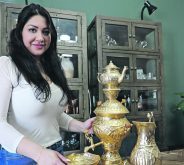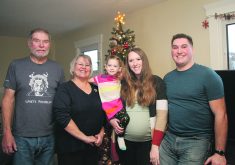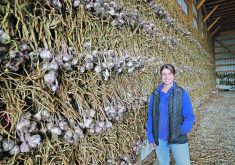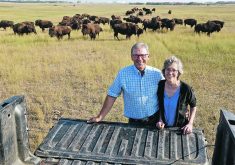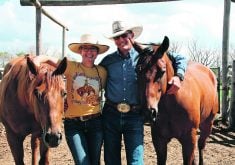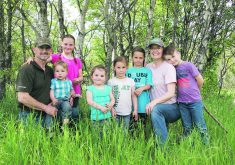Breeding the best | The Wiersmas have spent 25 years building a reputation for producing quality animals
NOBLEFORD, Alta. — Spring foals and their dams sidle over and nuzzle Annelies Wiersma when she walks the pastures on Bonnie View Farm near this southern Alberta town.
The horses’ affection and curiosity provide evidence of the gentle temperament for which the Friesian breed is known.
That, along with the horses’ colour, elegance, beauty and heritage made them the breed of choice for Annelies and her husband, Klaas.
Like their horses, they originate in the Friesland region of Holland.
Both veterinarians, Klaas has a practice in nearby Picture Butte and Annelies is retired from the Canadian Food Inspection Agency.
Read Also

Nutritious pork packed with vitamins, essential minerals
Recipes for pork
Now that Klaas has reduced his clinic hours, the couple has more time to devote to breeding and training their herd of 20 Friesians on their 40-acre property.
They’ve been in the horse business here since 1987, carefully building a reputation for the quality of the animals they produce.
“When we started, most people didn’t know what it was,” said Klaas about Friesians. “We spent a lot of time promoting the breed.”
Friesian horse history dates back to the Middle Ages, although the official registry did not begin until 1876. The warmbloods have a history of popularity as carriage horses but were also bred for agricultural use.
That meant breeding for a shorter and thicker animal, traits that have since been de-emphasized, said Klaas.
The breed came near extinction when mechanization replaced carriages and farm horses, but people in Friesland rescued it by promoting Friesians for riding.
“Then they started to select in breeding to have a more upward built, higher-off-the-ground horse,” said Klaas.
Added Annelies: “The genetics were there. It was just a matter of selection. We like the lighter ones, but once in awhile, you get a heavier one anyway and there’s always someone who likes that.”
True Friesians are completely black, although white stars are allowed. They are also characterized by feathered legs, long manes and tails, arched necks and gentle dispositions.
Friesian bloodlines are carefully protected. Klaas goes every year to the annual stallion presentations in Friesland, where the most promising animals are shown, judged and winnowed down to a select few.
Those few are tested for riding, driving, stable behaviour, character, willingness to work and agility, Klaas said.
“It’s a very strict selection process.”
Selected stallions receive a breeding licence and if the resulting crop of foals is deemed to be better than average and an improvement to the breed, the stallion is allowed to become a breeder.
As veterinarians, the Wiersmas are able to do their own artificial insemination on breeding mares. Though AI is common in cattle breeds, it is much less reliable in horses, Annelies said.
She and Klaas were involved in the earliest stages of using imported frozen semen, a process that can be expensive and uncertain.
Horse semen doesn’t freeze well and a considerable amount is needed to do the job.
“With some stallions, you need five straws, others you need more straws for one breeding because they cannot pack enough good sperm cells in each straw,” Annelies said.
The Wiersmas no longer participate in shows and dressage, though they’ve had success on the show and dressage circuits. Now they prefer to concentrate on training and riding.
“You come to a point, when you go to a show, you are gone for three days, and you’re only 10 minutes in the ring every day,” Klaas said.
Annelies continues to take riding lessons from international level instructors to ensure she provides proper training for their own animals. Every animal gets basic training as a three year old and word of mouth suffices for sales.
The Wiersmas’ home, built in 1918, stands on a hill with views of the Rocky Mountains and the pastures and plains that roll out north of Lethbridge. Klaas recalls that when he and Annelies bought their property, he had a plan.
“It’s only going to be perfect when I look out of the window and I can see Friesian mares in the pasture,” he said.
With those words, he and Annelies looked out the window at their herd of horses, placidly grazing on the green grass of spring pasture.
Perfection apparently accomplished.






